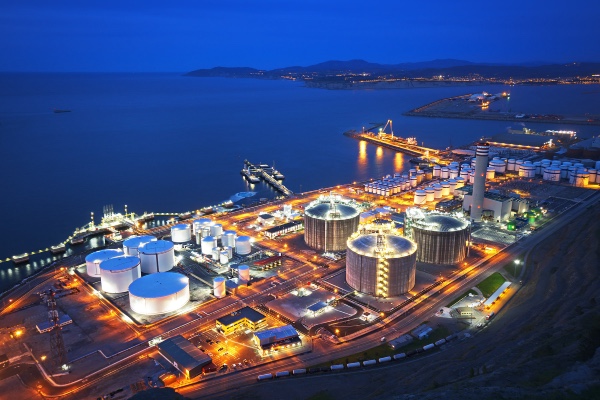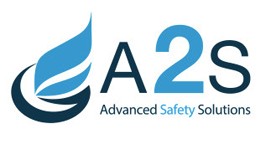APPLICATIONS IN THE OIL AND GAS INDUSTRY
This sector covers offshore applications such as drilling and production platforms. Constantly exposed to extreme weather conditions, they require materials capable of resisting salty atmospheres.

Upstream applications
Geological exploration
Drilling
Production
Transport
Storage
Security
Intermediate applications
Refining
Gas processing
Transport and storage by ship
Downstream applications
Transport
Storage
Upstream sector: exploration and production
This sector covers offshore applications such as drilling and production platforms. Constantly exposed to extreme weather conditions, they require materials capable of resisting salty atmospheres.
Offshore applications:
Given the extremely high cost of production downtime, hardware for offshore applications must also bewear-resistant and easy to maintain. An FPSO (Floating Production, Storage and Offloading Unit) vessel, for example, can produce up to 200,000 barrels of crude oil per day. At approximately $80 to $90 per barrel, a failure causing the vessel's production to be interrupted could result in a loss of revenue of more than $700,000 per hour.
Onshore applications:
In economic terms, these applications aremore viablethan offshore applications, as evidenced by the exploitation of some wells that produce only a few dozen barrels of oil per day .
However, they can become extremely large due to the networking of wells for a production of up to one million barrels of oil per day. This expansion comes with other challenges to overcome.
First, drilling rigs are generally mobile, with motors and pumps often mounted on skids for easy transportation.
Second , due to the multiplicity of drilling towers in a network, a very thorough control system must be in place to ensure the regularity and uniformity of the flows coming from all the towers. On this precise point, A2S instrumentation boxes offer great flexibility because they can be tailor-made in accordance with precise technical specifications.
The need for maintaining circulation also requires the need for wellhead motors and controls, which are under high pressure and must be able to withstand up to 1,400 bar.</strong >
This critical point must be closely controlled to ensure uniform pressure, which is done by motorized valves in the wellheads. CBDB A2S boxes are custom-made and used to control these valves. They allow pressures to be controlled at the same time and data to be transmitted to the central control point.
Specific requirements
- Corrosion in a saline environment (offshore platforms, FPSO, etc.)
- Resistance to petroleum and chemicals
- Extreme ambient temperature
- Protection level
- Connection with other equipment
- Certification required (Ex e, Ex d, etc.)
- Standards required ATEX, IECEx, UL, GOST, INMETRO…
Certifications / Characteristics:
- ATEX Europe Directives
- IECEx (International Certification System national)
- Zones 1,2, 21, 22
- Minimum Protection Index IP 66
Associated products
Intermediate sector: transport, storage and partial processing
The difficulties here are linked to the fact that the extracted product is not pure and often contains a mixture of oil, gas, water and sand which must be separated before transport or delivery by pipeline to a storage unit.
This separation can be carried out by several ways depending on the type of oil or gas being extracted by the wellsand up to 4 processes are often required before the product is ready to be piped or transported. These processes require energy, which is frequently obtained from the product itself through the use of gas.
Once the separation is complete, the product may be transferred for storage purposes; in the case of an offshore platform, separation is often carried out on land, before pumping to storage depots. In the case of FPSO vessels, all operations take place on board, and the oil is then transferred to tankers before being sent to storage depots.
This step is also that of counting for the calculation of invoices and taxes. Current counting processes are extremely precise and measure not only the amount of oil produced, but also density, viscosity, pressure and temperature, and in the case of gas, the amount of water vapor .
Oil is often pumped directly to the refinery, the starting point for downstream applications but often needs to pass through a series of pumps to reach the desired pressure .
Specific requirements
- Corrosion en milieu salin (plates-formes offshore, FPSO…)
- Résistance aux produits pétroliers et chimiques
- Température ambiante extrême
- Niveau de protection
- Raccordement avec d’autres équipements
- Certification requise (Ex e, Ex d, etc.)
- Normes requises ATEX, IECEx, UL, GOST, INMETRO…
Certifications / Characteristics:
- ATEX Europe Directives
- IECEx (International Certification System national)
- Zones 1,2, 21, 22
- Minimum Protection Index IP 66
A NEED, A REQUEST?
Downstream sector: processing and delivery
There are currently just over 700 refineries around the world competing to supply finished carbon-based products to local and international markets.
Refined products include:
- Fuels – LPG, gasoline, kerosene, diesel, gas oil and bunker fuel .
- Petrochemical raw materials – LPG, naphtha and aromatics.
- Energy sources – LPG, kerosene, fuel oil and fuel oil.
- Special products – Lubricants, bitumen, coke, solvents and waxes.
- Petrochemical raw materials – Synthetic fibers (polyamide), plastics (polyethylene, PVC).
Refining has four stages including
1. the first is that of distillation for the separation into five groups of products: LPG, naphtha, kerosene, diesel, and atmospheric residue. This distillation process takes place at high temperatures. The higher the temperature, the better the product will be.
2. The second stage concerns that of valorization or reforming which modifies the product at the molecular level, for example to transform low octane naphtha into high octane naphtha usable for production of gasoline.
3. The third and fourth steps involve product processing to remove impurities such as sulfur and blend the refined product into various marketable products.
The final stage is that ofsupply to the market which includes storage and transport. In the case of aviation fuel, for example, it can be shipped directly to airports by road or rail to the airport where it will be stored before being transferred by tanker truck to the airport. aircraft refueling.
All stages of the downstream process involve different needs to ensure the safety of personnel and the quality of the final product.
Specific requirements
- Video surveillance
- Corrosion in a saline environment (platforms offshore, FPSO…)
- Resistance to petroleum and chemical products
- Extreme ambient temperature
- Protection level
- Connection with other equipment
- Certification required (Ex e, Ex d, etc.)
- Required standards ATEX, IECEx, UL, GOST, INMETRO…
Certifications / Characteristics:
- ATEX Europe Directives
- IECEx (International Certification System national)
- Zones 1,2, 21, 22
- Minimum Protection Index IP 66



